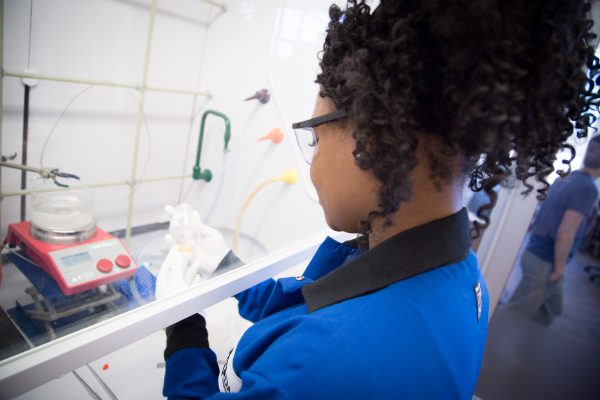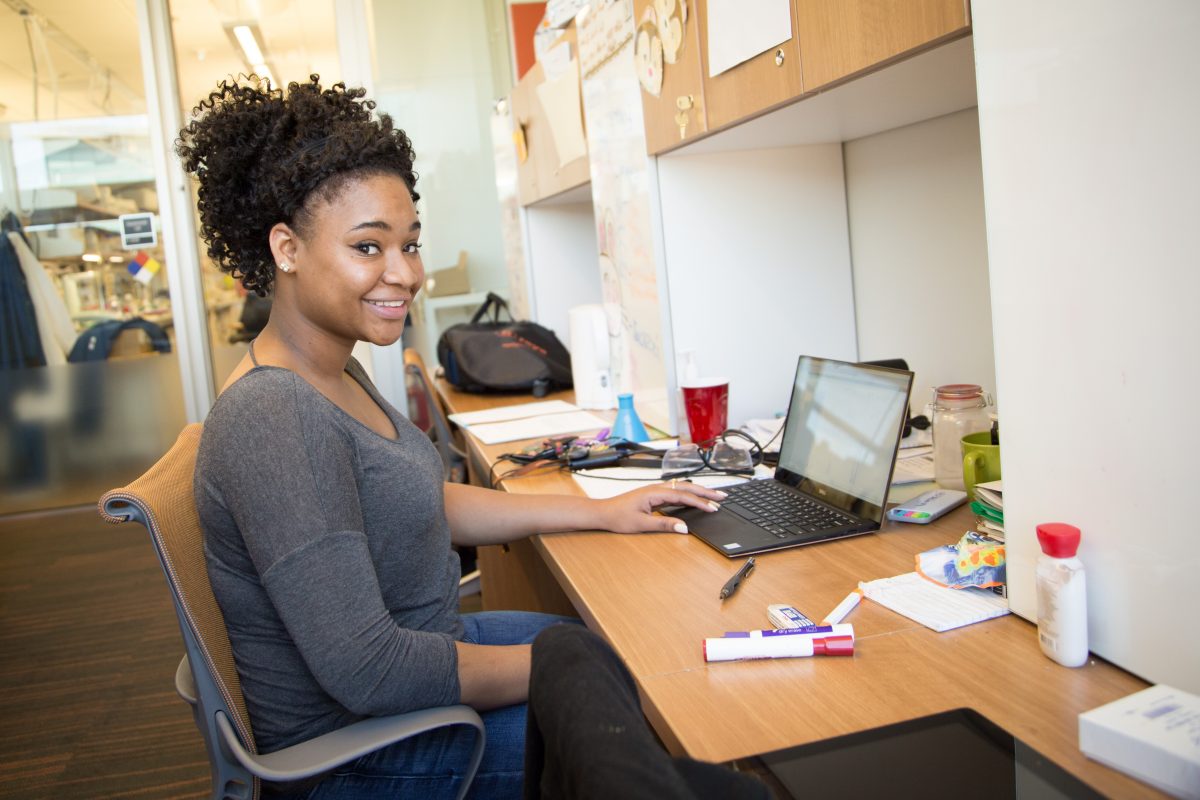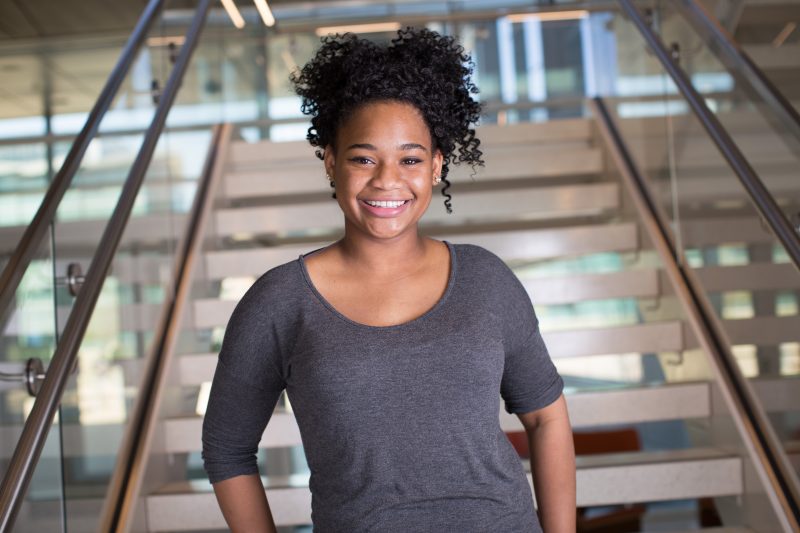
Over 13,000 students applied to the Graduate Research Fellowship Program (GRFP) from the National Science Foundation (NSF), but only 2,000 succeeded in receiving an award. Candace Benjamin, UT Dallas PhD student and “super scientist” in the Gassensmith Lab, shines among those winners. Candace will receive three years of financial support towards a research-based masters or doctoral degree in science and engineering. We had a few questions for Candace about this impressive achievement:
Can you tell us a bit about the process for applying to the GRFP?
You need to create a personal statement that outlines what you plan to accomplish with your research goals. You want to give the reviewing committee some insight into what they will be funding you for. It’s essential to know that you, yourself, are important. Your personal narrative is your way of telling the world I am a scientist because I am great. Your life may have been hard before – chemistry might not come easy to you, like it didn’t for me – but you are here for a reason. Prove to the reviewers that you are worth the money and not a waste of their time.
The NSF is interested in future STEM leaders. What achievements have you demonstrated that got their attention?
They were impressed with my community outreach work. I do a lot of elementary school science projects. On weekends, I volunteer at the Sachse library doing small chemistry experiments with kids to show them that chemistry isn’t that outlandish. I give them a fun way to engage in chemistry projects that involve items such as polymer formation. Once, we made little bouncy balls out of household items. I really enjoy seeing their faces light up. I’m not just doing chemistry just for me. Chemistry is for everyone and everybody should be able to participate in it.

Could you please tell us in layman’s terms what research you will be pursuing with this grant?
We found that we can load the anti-cancer drug docorubicin on the inside using a macromolecule that falls apart when gamma radiation hits it. This is already a well-known fact and widely-used cancer treatment, but we want to focus on a more localized release. Generally, cancer drugs are administered to you intravenously. It travels throughout your body damaging anything it comes in contact with. The hope is that it will be the cancer that receives the most damage. What we want to do is have a release mechanism that targets specific cancer areas. For example, say the cancer is in your lungs. If we shine gamma rays on your lungs, the drug will only release into your lungs and not damage all your healthy cells and make you sick. In the long run, we want to increase patient longevity while increasing the efficacy of the drugs that are out there.
Any other advice you might have for those students interested in research?
If research is something you want to do, then just do it. Don’t let any reservations hold you back. At the end of the day, it’s about you and what it is that makes you happy. Give research a try. You might like it and you might not. If you don’t, you can always take a different path, but research is a great place to start. If gives you a lot of experience to take with you within the industry. You will obtain a lot of lab and writing experience. At the very least, research will give you the building blocks to get somewhere else, but it’s always worth a shot.


You must be logged in to post a comment.